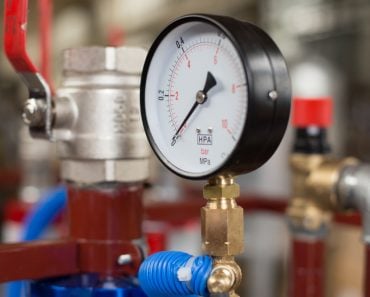Table of Contents (click to expand)
The blood pressure meter is used to determine blood pressure by taking the systolic pressure when the first pulse is heard through the stethoscope, and the diastolic pressure when the pulse is no longer audible.
Unless you have lived in a cave since birth, you have had your blood pressure checked at some point in your life. If you’ve ever come across the mercury variant of a blood pressure machine – the one where a column of mercury is used to determine your blood pressure – then you may have noticed that, as the cuff is tightened around the arm, the mercury level begins to fall rapidly, without really stopping at any clear point.
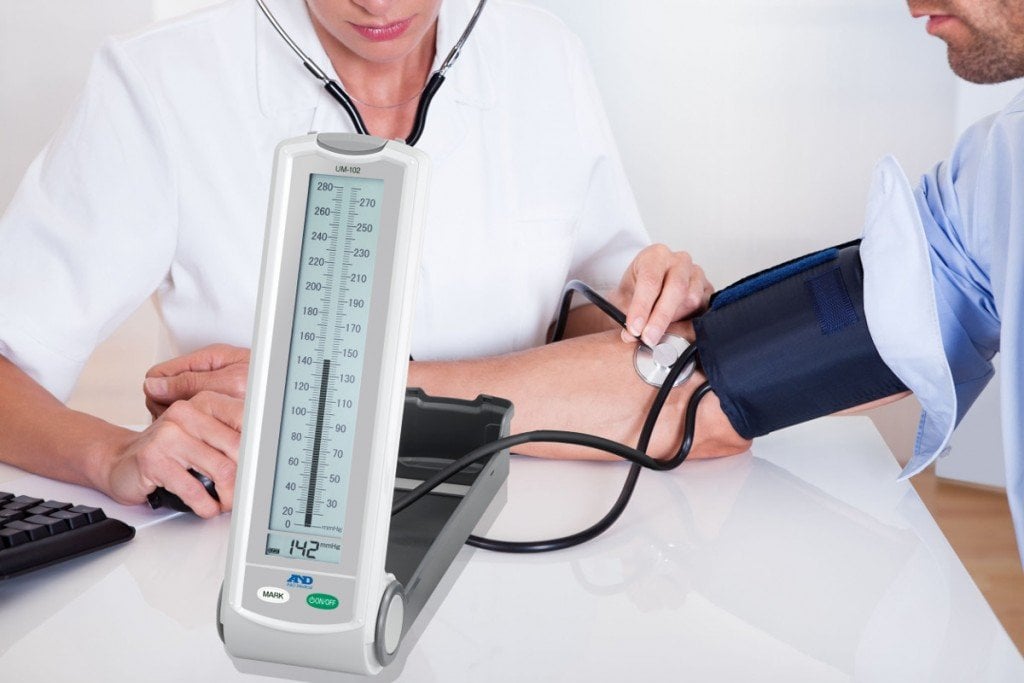
Now, one would expect the rapidly falling mercury level to stop at some point, so that the corresponding reading could be taken from the gauge. Yet, that doesn’t happen, so how do medical practitioners take down an exact reading of the plummeting mercury and provide an accurate blood pressure reading for the patient?
Short answer: The value of the systolic pressure (the first reading) is taken when the first pulse is heard through the stethoscope, while the diastolic pressure is noted when the pulse is no longer audible.
Before we get to the exact details of the process, we need to know a thing or two about the vital biological sign that we’re measuring here – blood pressure.
Recommended Video for you:
What Is Blood Pressure?
In the most basic terms, blood pressure (or BP) is the pressure that the blood exerts on the walls of the body’s blood vessels. It is one of the vital signs of the body (others include the heart rate, respiratory rate, body temperature etc.). The normal resting BP of an adult is 120/80 mm Hg.
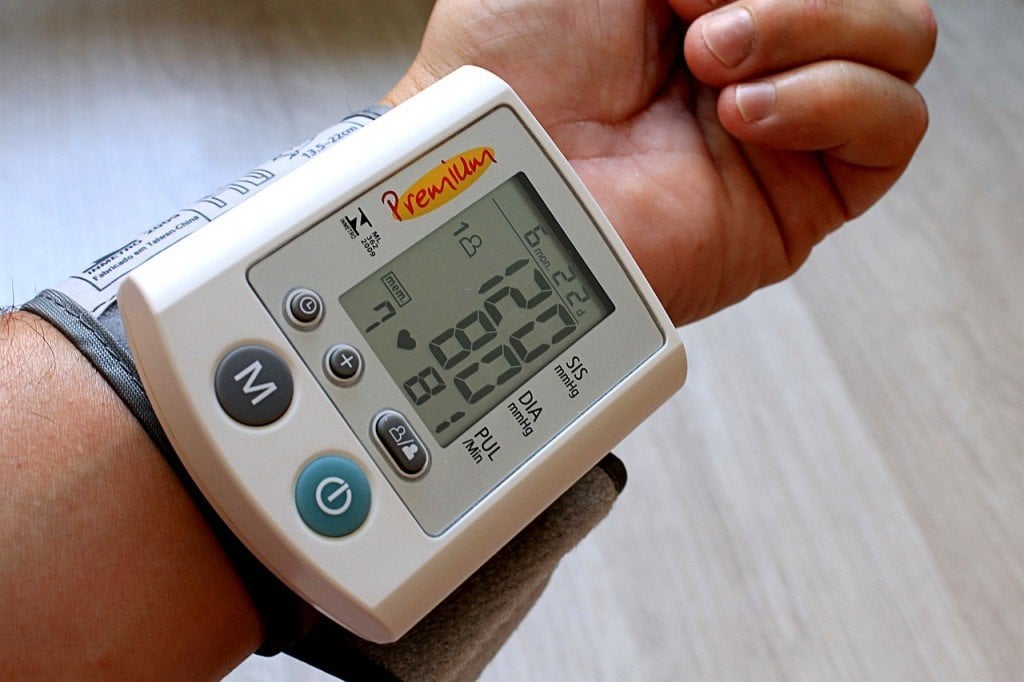
People have different values of BP depending on their age, lifestyle, physical and mental wellbeing and whether they have any ailments. Having a high value of blood pressure (also called hypertension) may cause chest pain and could lead to heart attacks or strokes, while a low BP value (hypotension) may lead to nausea, fatigue, blurred vision and fainting.
Sphygmomanometer: A Device To Measure Blood Pressure
Also referred to as a blood pressure monitor or blood pressure meter, a sphygmomanometer is a device that is widely used to measure blood pressure. It consists of a number of components, including an inflatable cuff, a pump with a valve and a mercury-filled or mechanical manometer. It’s usually used with a stethoscope, which is used to listen to the sound of the pulse in the arm of the subject.
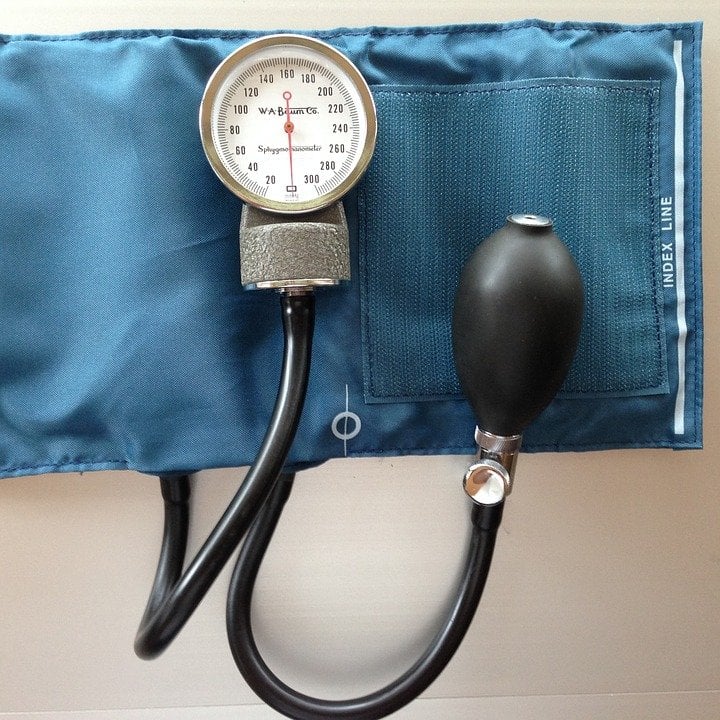
Although the ban on mercury devices in hospitals and offices has certainly put a lid on the popularity of mercury sphygmomanometers in the US and many other countries, they’re still considered the gold standard when it comes to accurately measuring blood pressure with very little setup.
How Exactly Is Blood Pressure Measured Using A Sphygmomanometer?
The doctor or medical examiner first ensures that you (i.e., the subject) are seated in a quiet environment and are completely relaxed. Your arm should rest comfortably at heart level if you want to take accurate readings. The end of a stethoscope is placed on the inner surface of your elbow.

Next, the examiner will wrap the inflatable cuff around your arm and begin inflating it by squeezing a small pump. You will experience a weird sensation as the cuff gets more and more inflated and tightens around your arm. The examiner inflates it until the mercury in the gauge reaches a certain level (usually 30 points above the expected systolic pressure).
The examiner then opens the valve very slowly to release air from the cuff and listens for the pulsing sound through the stethoscope. The moment the doctor hears the first pulsing sound, he notes the mercury reading from the pressure gauge. This is your systolic pressure, and is the higher of the two readings.
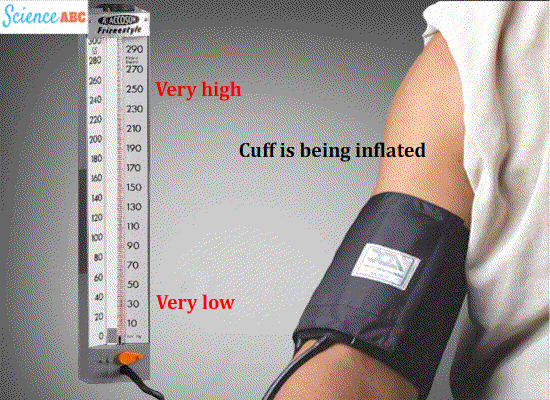
The mercury level will continue falling until, at some point, the pulsing sound of the blood fades or is no longer audible through the stethoscope. The examiner again notes the mercury reading in the pressure gauge. This is your diastolic pressure, i.e., the pressure of the blood in the arteries when your heart rests between beats.
This is how medical practitioners determine the blood pressure of a subject by observing the perpetually falling level of mercury in the gauge. Although there are a few more sophisticated modern techniques to measure blood pressure with different equipment, the increasingly rare mercury sphygmomanometers undeniably hold a special place in the history of medical equipment!
References (click to expand)
- Sphygmomanometer - Wikipedia. Wikipedia
- Ogedegbe, G., & Pickering, T. (2010, November). Principles and Techniques of Blood Pressure Measurement. Cardiology Clinics. Elsevier BV.
- Varughese, G. I., & Lip, G. Y. H. (2005, March). Goodbye Mercury? Blood Pressure Measurement and Its Future. Journal of the Royal Society of Medicine. SAGE Publications.
- When and How to Check Your Blood Pressure - WebMD. WebMD





